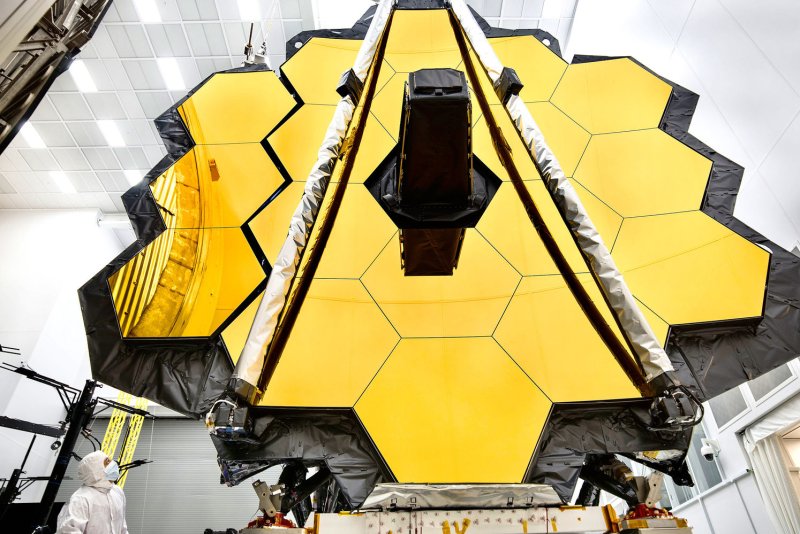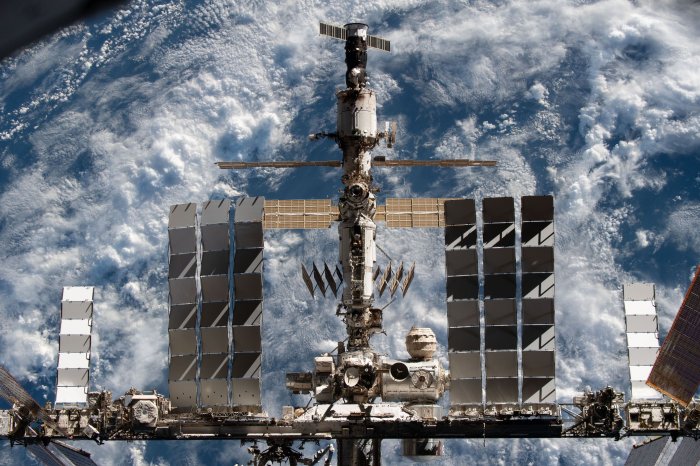1 of 5 | The towering primary mirror of NASA's James Webb Space Telescope stands inside a cleanroom at NASA's Johnson Space Center in Houston where it was tested before launching on December 25. Photo by Chris Gunn/NASA |
License Photo
ORLANDO, Fla., Feb. 8 (UPI) -- NASA has started the tedious, precise job of aligning 18 sections of the James Webb Space Telescope's giant golden mirror.
The mirror had to be large enough to capture infrared light from the universe's earliest galaxies, but also had to be sectioned and folded in order to build and launch.
Now, NASA engineers and astronomers will attempt to reposition all 18 hexagonal sections so they match up almost perfectly -- to within 50 nanometers. A human hair is about 90,000 nanometers wide.
To do that, the Webb team sends commands through space to Webb's position a million miles from Earth and looks at images the observatory's sensors have started to collect. The alignment process officially began on Sunday.
Those images are blurry because the mirror is not aligned yet, and NASA is not making them public. But even such blurry images were a treat to see for people who have worked for decades on the project, NASA's Lee Feinberg said in an interview.
"I was very energized by what I saw," said Feinberg, a telescope manager at the space agency. "We had an idea of what to expect from simulations, and this matched those sims almost perfectly."
The $10 billion Webb observatory can see further than the Hubble Space Telescope, but it sees the universe in infrared light, whereas Hubble detects visible light. Both may be in operation for years simultaneously.
The very first light to hit Webb, which launched on Dec. 25, came from a star 258.5 light-years away in the Big Dipper or Ursa Major constellation -- known as HD 84406.
While heartened, Feinberg and the teams of people working on the alignment realize there's still much work to be done, he said. Overall, Webb's launch and deployment to its orbital location have been very successful.
"We're still early so you got to remember that you only draw some conclusions early."
It's all part of Webb's commissioning process, according to NASA and the Maryland-based Space Telescope Science Institute which operates all the nation's space telescopes, including Hubble and Webb.
Once Webb is aligned, each of its instruments will be tested in various modes, which will complete the six-month commissioning process.
NASA plans to release the first public images as soon as possible in that process, but hasn't planned a release date, NASA's Jane Rigby said in a teleconference Friday.
Neither has the agency announced the space targets for those images.
"When the science instrument modes have been approved as ready for science, there will be a big public release of the early release observations. These are designed to be on the front pages of media all around the world," said Rigby, a Webb operations project scientist.
The International Space Station is pictured from the SpaceX Crew Dragon Endeavour during a flyaround of the orbiting lab that took place following its undocking from the Harmony module’s space-facing port on November 8. Photo courtesy of NASA
















